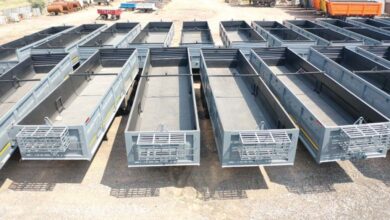
The Balance of Purpose and Agility in Leadership
In today’s business environment, leaders face the constant challenge of steering their organizations through change, while maintaining a clear sense of direction. Markets move fast, technology progresses relentlessly and customer demands keep growing. Even so, leaders guided by a strong mission tend to handle uncertainty with greater poise. Gregory Hold, CEO and founder of Hold Brothers Capital[1] recognizes that success comes when leaders pair an enduring sense of purpose with the agility to pivot, when conditions demand it. His perspective highlights that leadership is not about choosing between focus and flexibility, but about learning to embody both at once.
Small businesses must find this balance to survive and grow. A strong mission guides decision-making, keeping the company aligned, when external forces create confusion. At the same time, agility ensures the business is not locked into a rigid path that may no longer be viable. Leaders who develop the ability to move quickly, without losing sight of core values, create organizations that are both resilient and trustworthy.
Purpose as the Guiding Compass
Every effective leader begins with a sense of purpose that extends beyond profit. Purpose defines why the organization exists, what it contributes to its community and what values shape its decisions. This sense of direction acts as a compass when daily distractions, competitive pressure or market uncertainty threaten clarity. Without purpose, organizations risk chasing trends or reacting impulsively to short-term challenges.
Leaders who articulate purpose clearly provide employees with meaning in their work. A mission that resonates not only helps retain talent but also strengthens decision-making across all levels of the business. When choices align with a shared purpose, employees feel empowered to act with confidence. It creates consistency in behavior even when external conditions are uncertain.
Agility as the Counterbalance
While purpose is the compass, agility is the steering wheel. Agility allows leaders to adjust their approach, while staying pointed in the right direction. It involves scanning the environment for changes, assessing risks quickly and acting before challenges escalate. For small businesses, agility often makes the difference between growth and stagnation.
Agility is not a reckless reaction. Instead, it is a structured practice of learning from data, listening to customers and considering multiple scenarios. Leaders who embed agility into their culture demonstrate to their teams that flexibility is not a weakness, but a strength. Employees are encouraged to evaluate ideas, question processes and pivot them when added information emerges. When practiced effectively, agility ensures that purpose is never lost, but rather delivered through evolving strategies.
When Vision Meets Adaptability
The most successful leaders are those who align vision and adaptability. For example, a local retailer may hold firmly to its purpose of supporting community commerce, while pivoting from brick-and-mortar sales to e-commerce, when circumstances change. The mission remains intact, but the method adapts to meet customer needs. In doing so, the business demonstrates that staying true to core values does not mean resisting change, but rather delivering them through novel approaches.
This principle applies across industries. Vision-driven leaders avoid the trap of overcorrecting when trends shift. Instead, they ask how changes can be integrated into the organization’s purpose. Agility is then directed, not aimless. The result is a business that adapts, without sacrificing its identity, which builds long-term trust with employees and customers, alike.
The Role of Communication
Balancing purpose and agility requires open and transparent communication. Leaders must explain both the enduring mission and the reasons for any pivots. When teams understand why adjustments are made, they are more likely to embrace change. Communication prevents confusion and reinforces that flexibility does not mean abandoning values.
Leaders who excel at communication invite feedback, as well. Employees often detect emerging changes before they escalate. Listening to this feedback equips leaders with valuable knowledge for agility, while explaining how adjustments align with the company’s mission helps build trust that decisions are deliberate.
Learning from Uncertain Environments
Fast-moving industries such as trading, technology and logistics show how leaders can balance purpose with agility in real time. These sectors operate under constant change, yet the most effective organizations maintain clear guiding principles. In trading, for example, firms commit to disciplined risk management, while adjusting strategies daily. In logistics, companies promise reliability, while rerouting shipments when disruptions arise.
Small businesses can borrow these lessons. By establishing practices such as quarterly strategy reviews or scenario planning, leaders create space to reconsider tactics, while maintaining core purpose. These habits ensure that pivots are intentional, not improvised. They provide assurance that the organization’s path is consistent, even as the environment shifts.
Empowering Teams for Both Stability and Flexibility
Purpose and agility should be embodied throughout the organization, not just by its leaders. Employees need to feel confident in the mission, while being supported to act with flexibility. Leaders who enable teams to make decisions guided by company values cultivate both stability and adaptability, simultaneously.
This empowerment builds psychological safety. When employees trust that they will be supported as they evaluate ideas or suggest changes, they are more likely to contribute valuable insights. At the same time, clarity of purpose ensures that decisions remain aligned with the organization’s vision. Together, these qualities create a culture where adaptability and focus are reinforced, rather than opposed to one another.
Leading with Steadfast Flexibility
Leadership in uncertain times is not about having all the answers, but about holding steady to a mission, while staying open to change. Gregory Hold emphasizes that leaders who maintain this balance strengthen their organizations and cultivate lasting trust through periods of disruption. This philosophy is embedded in the culture of Hold Brothers Capital, where long-term vision coexists with tactical adaptability, serving as a model for leaders across industries. Purpose serves as the anchor, while agility delivers the momentum needed to succeed.
This balanced approach builds resilience for small businesses. Customers trust businesses that remain true to their values, while employees remain motivated when they see both clarity of vision and flexibility in practice. By combining purpose and agility, leaders prepare their organizations to face uncertainty with confidence and optimism, ensuring continuity and growth in a dynamic marketplace.
[1] Hold Brothers Capital is a group of affiliated companies, founded by Gregory Hold.




